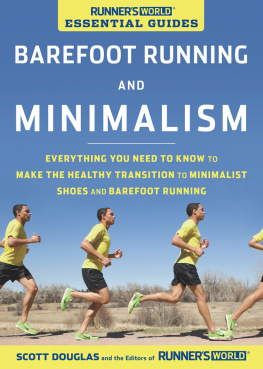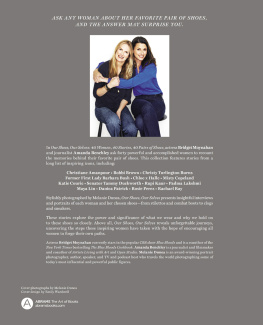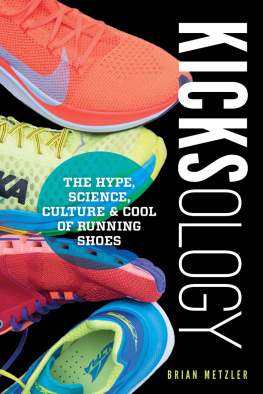The University of Chicago Press, Chicago 60637
The University of Chicago Press, Ltd., London
2022 by The University of Chicago
All rights reserved. No part of this book may be used or reproduced in any manner whatsoever without written permission, except in the case of brief quotations in critical articles and reviews. For more information, contact the University of Chicago Press, 1427 E. 60th St., Chicago, IL 60637.
Published 2022
Printed in the United States of America
31 30 29 28 27 26 25 24 23 22 1 2 3 4 5
ISBN-13: 978-0-226-81588-6 (cloth)
ISBN-13: 978-0-226-81590-9 (paper)
ISBN-13: 978-0-226-81589-3 (e-book)
DOI: https://doi.org/10.7208/chicago/9780226815893.001.0001
Library of Congress Cataloging-in-Publication Data
Names: Benzecry, Claudio E., author.
Title: The perfect fit : creative work in the global shoe industry / Claudio E. Benzecry.
Description: Chicago : University of Chicago Press, 2022. | Includes bibliographical references and index.
Identifiers: LCCN 2021031025 | ISBN 9780226815886 (cloth) | ISBN 9780226815909 (paperback) | ISBN 9780226815893 (ebook)
Subjects: LCSH: Shoe industry. | Womens shoesDesign. | Fashion and globalization.
Classification: LCC HD9787.A2 B45 2022 | DDC 338.4/768531dc23
LC record available at https://lccn.loc.gov/2021031025

This paper meets the requirements of ANSI/NISO Z39.48-1992 (Permanence of Paper).
Marco Polo imagined answering (or Kublai Khan imagined his answer) that the more one was lost in unfamiliar quarters of distant cities, the more one understood the other cities he had crossed to arrive there; and he retraced the stages of his journeys, and he came to know the Port from which he had set sail, and the familiar places of his youth, and the surroundings of home, and a little square of Venice where he gamboled as a child.
Italo Calvino, The Invisible Cities
The Frailty of Commodity Chains
If you are reading this, it means that humanity has survived the COVID scare of 2020, the virus did not mutate, vaccination worked, and the event is remembered not as a cataclysm but as a great interruption; an interruption in our daily routines, rhythms, relationships, practices. We saw how toilet paper went missing from the supermarket, and we desperately bought brands we had never heard of before. We also switched our consumption patterns, hoping for Amazon and other digital merchants to get us what we needed without the inconvenience of human contact. But the convenience we were used to just wasnt available; packages were delivered much later than usual, if at all; items were not restocked, regardless of whether at a giant chain or a mom and pop shop. We had gotten used to the idea of a frictionless and seamless world, a world that was fully global, with no space not covered in some way by the planetary dream of total connection. This interruption directed our attention to the fact that the global world we inhabit(ed) wasnt exactly as we imagined it. Its stop did not signal that an automated process had come to a halt. Rather, it pointed us toward the fine-tuned work of making sure it never stopped again by paying more attention to the personnel, techniques, and devices that sustained and made the world global daily. It wasnt necessarily a world made anew, but it was certainly one thatparaphrasing Dominguez Rubio (2020)depended on Sisyphean activities, the kind of work that has an end that only signals the beginning of a similar cycle to yield a similar result in the near projected future. The things we are used to having all have to be produced, developed, and distributed, and each of those points in a circuit involves a myriad of people, tasks, and objects that have to be assembled into something relatively coherent to operate in a seamless fashion.
This COVID-19 moment helps us see just how frail commodity chains are on a global scale. And while this vulnerability is easy to notice when it comes to a dtente, it invites the opposite question about the felicity conditions of commodity chains: How is it that the world of global commodities is built, made to work without breaking points, and kept at such constant pace that we have taken it for granted and accepted it as the condition of our contemporary consumer life? What would it look like to make the work behind the scenes visible?
There are a few candidates to answer this question. Some would point to the political economy and talk about tariffs; other scholars would argue for the role of regulations at the level of world commerce, or of the geopolitical struggle between the US and China for international dominance. In this book I want to suggest a different route, looking instead at the kind of infrastructural work necessary to make sure products (novelty goods in this case) are put together despite geographical distance. And I do this by exploring the work of designers, developers, production managers, fit models, trade agents, and office girls in the shoe industry, making sure South Brazil, South China, and New York City are in a contiguous plane.
Female footwear is distinctively individualized, yet at the same time widespread. Fashion supposesby definitionthe supply of constant novelty to consumers. It is a privileged arena to see how commodity chains are sustained, since it combines patterns of repetition and innovation, the monotonous and cheap labor of the factory with the expertise involved in the care of making craft-like products, highlighting a whole series of challenging disjunctures that need to be bridged. Shoe companies have privileged the just-in-time model of work, storage, and product turnovera model that relies on flexible specialized contractors, which adds an extra layer of complexity in comparison to industries that depend on vertical integration.
Seeing the work of expert care, in situ and unraveling in real time, is a powerful reminder of how the worldas we learned during the COVID pandemicis not globalized in any final or set way. For five years I followed the womens shoe industry at key clusters of ideation, development, and production. I was able to witness the work of doing globalization, as much as the work of undoing and unraveling it; every attempt to generate stable linkages can be erased or can break down. The work of design is a unique entry point, since shoemaking implies a kind of collective object-creationwith its seasonal emphasis on new products, only for those products to mutate and be consumed in the production process, and for the process to start againthat resembles the Sisyphean labor of keeping the global going each and every day.
The pages that follow untangle what techniques, devices, and personnel were behind the scenes making sure shoes made it to consumers in the US, and in the process unravel another puzzle: what are the dynamics of cultural creation on a global scale? If we can think of infrastructures as ties that bind different locales, how are those relationships forged, maintained, and socially lubricated? What are the stories behind the technicians, designers, fit girls, agents, and managers who are usually made into the black box of commodity development, just a blip into the input-output chart? In answering these questions and making these stories visible, the book aims to specify how microempirical situations can give force or substance to a comprehensive account of global production. By the end of the journey, I hope I will have managed to understand not just the unfamiliar quarters that Khan and Marco Polo referred to, but alsomore importantlyhow much they are linked to the familiar comforts of our home.











 This paper meets the requirements of ANSI/NISO Z39.48-1992 (Permanence of Paper).
This paper meets the requirements of ANSI/NISO Z39.48-1992 (Permanence of Paper).